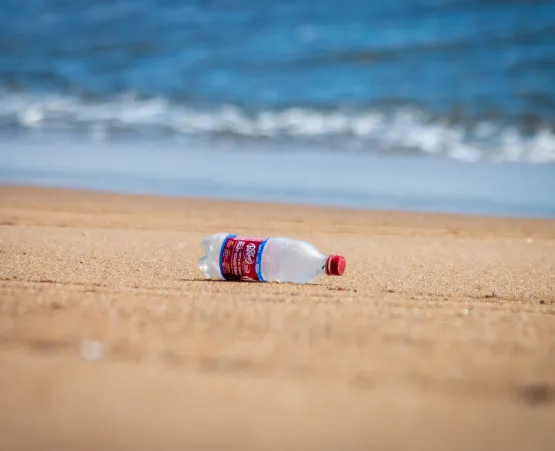According to the United Nations Environment Programme, it is projected that the amount of plastic that seeps into aquatic ecosystems will hit 23-37 million tonnes by the year 2040—more than doubling the 9-14 million tonnes in 2016.
To help solve this massive challenge, Simon Fraser University professors Katherine Reilly and Gillian Russell tasked a group of students at Centre for Digital Media’s (CDM) Master of Digital Media (MDM) program to tackle this wicked problem.
What originally started as a project focused on shoreline cleanup soon turned into a mission to save our oceans as the students quickly realized that a cleanup only addressed the trash that had already been created. What if there was a way to reduce the amount of plastic and trash created in the first place?
The team created To.Get, an app for mindful grocery shopping that enables communities to place their orders and for the admins of the app to check and fulfill orders. By exploring bulk buying as a community, this can help reduce the amount of plastic packaging each person consumes. This intervention makes it easy for people to work into their routines and promotes a sense of community.

“We’re so proud to create something that will have a lasting impact and aims to address the problem of ocean waste,” says Maia Puyat, MDM student. “While we used digital tools to create an intervention, we didn’t lose sight that at the heart of this project are humans—our relationship with the ocean and their relationality with each other. The issue of ocean pollution is one that humans caused, and only humans can fix it. Technology, in this case, simply serves as a tool to help humans solve human problems.”
The students developed the entire group buying system, including the research methodology, design methodology, communication channels, and all documentation, in addition to the digital tool. By applying design thinking, conducting interviews, leading a co-creation workshop, and doing competitive research, the team was able to collaborate with Katherine and Gillian and develop an intervention in about three months.
“Working with the students at Centre for Digital Media was a fantastic experience,” says Katherine Reilly, an associate professor in SFU’s School of Communication. “They brought with them the skills and knowledge needed to successfully create a digital intervention while also being opened to feedback and constant iteration.”
“The MDM student team was able to quickly take our challenge and use technology to come up with a practical solution that tackles ocean pollution at the source,” says Gillian Russell, an assistant professor in SFU’s School of Interactive Arts and Technology.
What makes CDM’s students, and the MDM program, unique is the focus on collaborative, project-based learning where students get hands-on experience developing digital media products. The students work in multidisciplinary teams to use creative technologies to solve some of society’s toughest challenges.
“We hope that through our transparent documentation, the system we developed could be published and shared for anyone to build on, to iterate, and to use in any form that serves them and their communities,” says Maia.
Student team
About Centre for Digital Media
Centre for Digital Media (CDM) was established through the ground-breaking partnership of four leading academic institutions: The University of British Columbia, Simon Fraser University, Emily Carr University of Art + Design, and the British Columbia Institute of Technology. CDM collaborates with our four founding academic institution partners, industry and the community to create world-leading digital media programming that focuses on addressing society’s most important challenges, hosted within a vibrant and inclusive campus at the heart of the Creative District on Great Northern Way in Vancouver.
